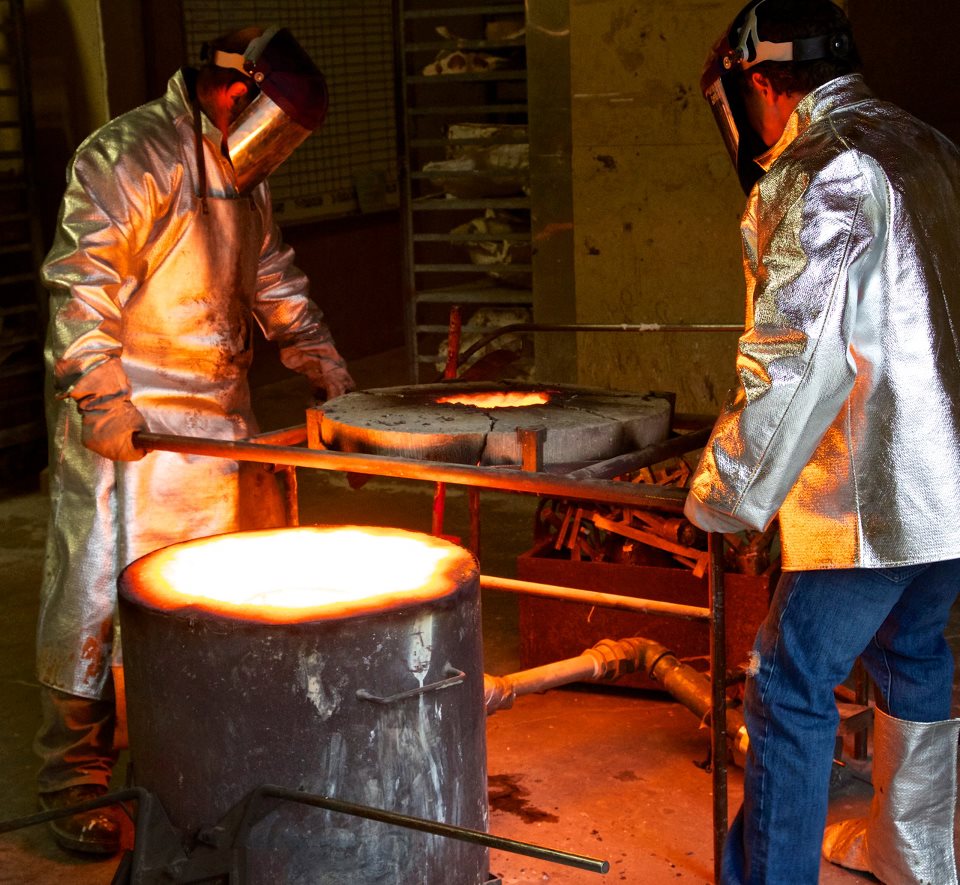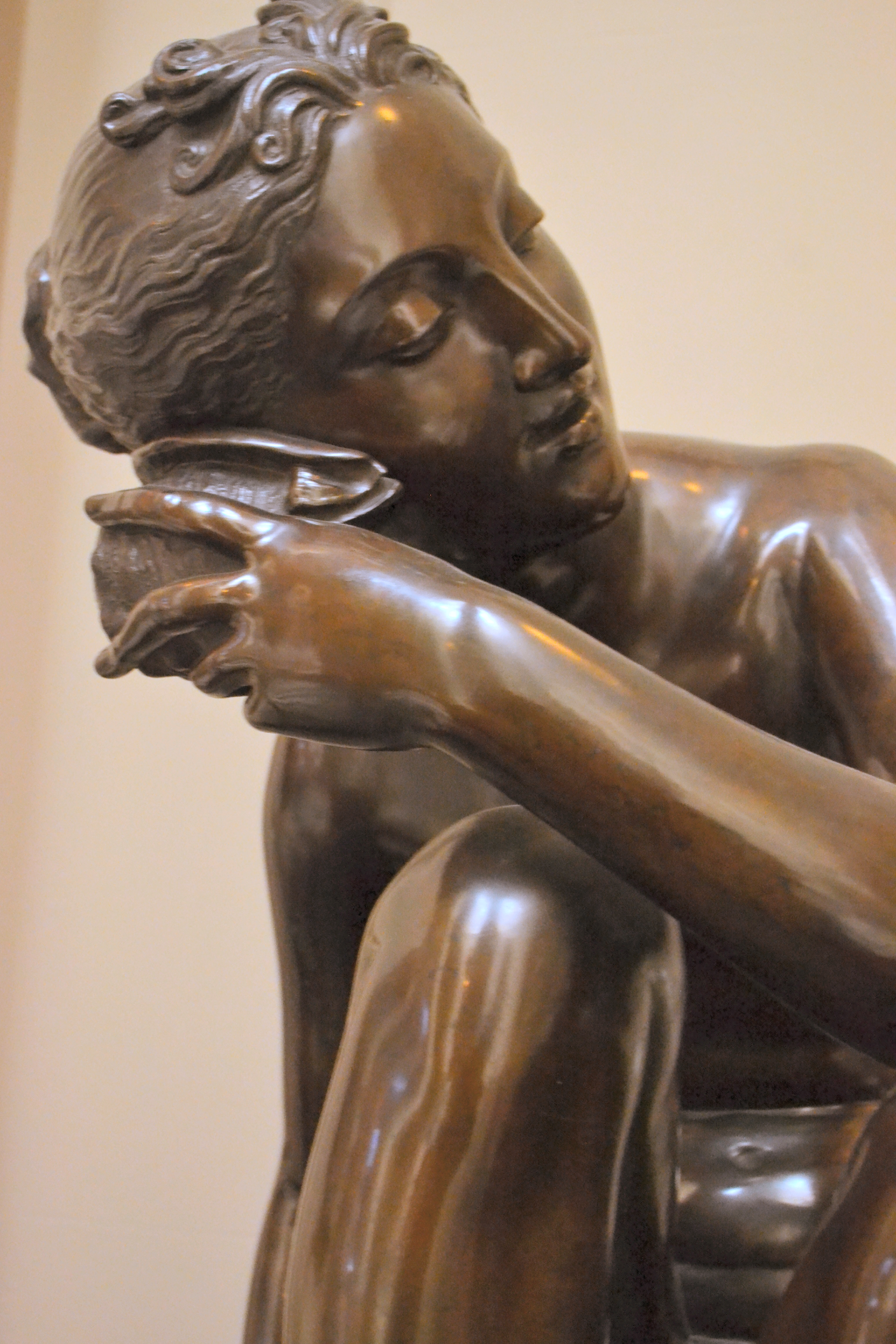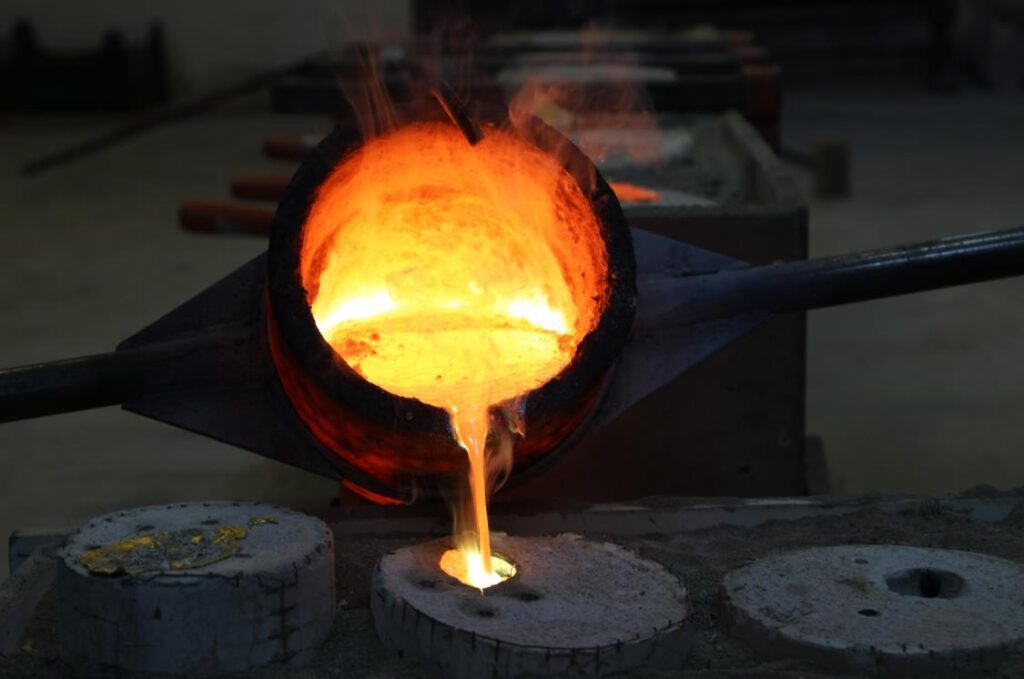What is bronze casting? How does it differ from castings made of copper, ceramics, and other materials? How is the process carried out, and what are its benefits? In this article, we will address all these questions. First, let’s become familiar with the bronze alloy. Bronze is primarily composed of copper and tin. This alloy has played a significant role in human civilization for thousands of years.
Its unique combination of strength, durability, and aesthetic appeal makes it a favored material in art, architecture, and various industries. Bronze is one of the most widely used metals for casting. Initially, this alloy appears golden to yellow but gradually develops a green patina over time. Additionally, sand casting and centrifugal casting are common methods employed in bronze casting. Reason: Improved clarity, readability, and technical accuracy; corrected punctuation and grammar errors. is

What is bronze casting?
Bronze casting is the process of melting and shaping molten bronze. During this process, bronze objects or sculptures are formed within a mold. There are several methods for casting bronze, including sand molds, metal molds (which can be gravity, high pressure, or low pressure), percussion molds, and plaster molds. To create decorative statues, a design must first be developed using specialized software. Afterward, the design is cast using plastic molds, and finally, bronze is poured into the molds to create the finished piece.
Bronze casting methods
(Investment Casting)
Lost wax casting is a technique used to create unique objects with intricate details. In this process, a mold is formed around a wax model, which is subsequently melted away when the mold is heated. This method creates a cavity for the molten bronze to enter during casting. Once the bronze has cooled and solidified completely, the piece can be extracted from the mold. In this technique, the wax model is coated with a ceramic layer, and a bronze piece is produced by pouring molten metal into this ceramic negative mold. Although the ceramic molds used in this technique are highly detailed, they must ultimately be broken to remove the finished piece.
Sand casting
As the name of this method suggests, a sand mold is utilized for molding and casting. First, sand is contained within a frame surrounding a specific pattern, which is coated with resin. Clay is added to enhance the strength and properties of the sand. Subsequently, when the model is removed from the sand mold, conditions are established to allow molten bronze to enter. Finally, after the bronze alloy has cooled, the cast piece can be easily extracted.
Centrifugal casting
Centrifugal casting is a widely used technique for manufacturing industrial components. In this method, a rotating mold shapes the product. While this technique is primarily employed to produce metal pipes, it can also be utilized to create various parts with circular, hexagonal, and symmetrical cross-sections.
Production of sculptures by casting bronze
The production of bronze statues dates back thousands of years, with the earliest known bronze statue originating around 2500 BC. Other historical bronze artifacts include weapons and tools that were cast in bronze. These items are associated with a historical period known as the Bronze Age and have been discovered in various regions, including Iran, Greece, India, Africa, and China. Bronze castings have played a crucial role throughout human civilization.

Bronze is known as the most popular alloy for sculpture due to its good adaptability, ease of use, and excellent malleability. Usually, during the bronze casting process and when this alloy cools down, we see expansion; This issue makes all the details of the mold to be engraved on the statue and bronze piece. In addition, as the bronze continues to cool down, we also see its contraction, which helps it to come out of the mold more easily.
Since bronze is one of copper alloys, it has a lower melting temperature compared to many metals. Wax models with ceramic coating are usually used to produce bronze sculptures by casting method. In this case, after molding and exiting the part, several other steps must be followed. In general, most sculptures consist of several castings that must be welded together. Next, the surface of the statue will be fully polished and the necessary details will be added to it. Finally, the required chemical coatings and colors are added to the surface of the bronze statue. This coating or patina will strengthen the bronze and make it last longer. Ferric nitrate, cupric nitrate and potassium sulphide are usually dissolved in water to make patina.
Applications of bronze casting
The process of casting bronze has various applications, from sculpture to jewelry and industry. In general, the most common use of this alloy is for the production of sculptures and decorative objects, and it is also used in the weapon industry and sports medals.
Some of the most important applications of bronze casting are:
Sculpture: Bronze alloy is an excellent material for sculpture. You can produce complex volumes with high details during the bronze casting process that will last a long time.
Jewelry production: Many jewelry are produced using the bronze casting process. This widely used alloy has been used since ancient times to produce decorative and wearable items.
Aviation industry: Bronze casting is also used in the aviation industry. Using this technique, various engine parts and various components including landing equipment and other vital and important parts are produced. These parts have very high durability and resistance.
Automobile industry: various car engine parts are made using bronze casting. Among other applications of this technique in the automobile industry, we can mention the manufacturing of parts of the power transmission system and its other vital parts.
Music industry: Various musical instruments such as cymbals, bells and gongs are made by casting bronze. The sound produced by these instruments is very special and unique and they are of very high quality.
Advantages of bronze casting
Durability:
Bronze casting creates a very durable sculpture. In fact, even today there are many bronze statues from ancient times. For this reason, to create a lasting sculpture, you can use bronze casting to ensure the final quality of the work.
Corrosion resistant:
One of the reasons for the longevity of bronze sculptures is their resistance to corrosion. If you also plan to make a sculpture to be used outdoors, you can use bronze casting to make your sculptures stronger and more resistant. Today, there are many statues in cities that are highly resistant to corrosion due to the use of bronze casting.
Beauty:
Bronze, in addition to strength, is also a very beautiful alloy. This metal alloy appears in various colors. It is often seen in copper or warm orange color due to the presence of copper in it. This characteristic of bronze is reminiscent of the flame of fire, and after the passage of time, its color gradually turns to green colors.
High flexibility:
Bronze alloys are more expansive in the molten state, which is one of the unusual features of bronze alloys that are very desirable in bronze casting; Because molten bronze can fill the mold well, and after cooling, it is easily separated from the mold due to the reduction of expansion. The high flexibility of the elements in bronze is one of the unique features of this metal, which has made it non-fragile. For this reason, bronze is one of the suitable metals for casting.
last word
Bronze is one of the most popular metals and alloys in the world of casting, which has many uses for sculpture. In addition, bronze has various applications in the industry and is widely used for the production of car engine parts, airplanes, as well as various parts of the power transmission system in vehicles and ships. With an online system for accepting casting orders, Manasanat Paydar manufacturing company allows you to make different parts and products. By visiting different sections of our website, you can benefit from various services for the production of parts.

